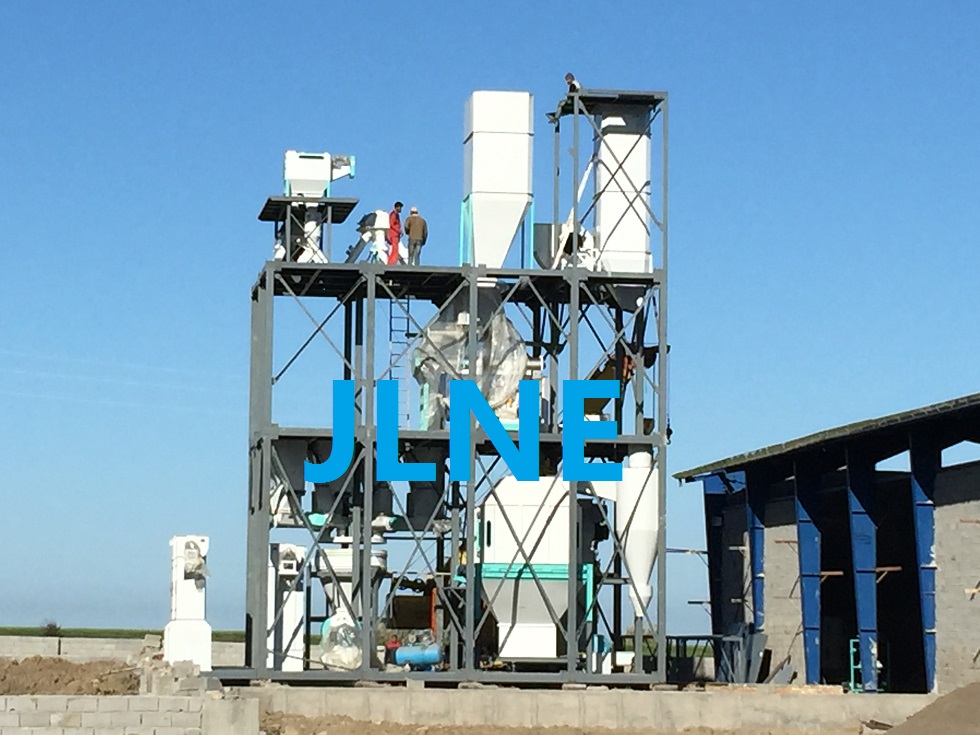How to reduce the production cost of feed factory III
6. Loss of raw materials in feed mills
The cost of feed ingredients in a feed mill accounts for about 70-85% of the production cost. Whether the loss of raw materials can be controlled at a reasonable level is an important indicator of the management level of a feed mill. Feed mills need to strictly implement the weighing system and inventory system of raw materials and finished materials, so as to find and analyze the causes of abnormal losses every month (or every half month) in time. The reasons for the loss of raw materials during feed processing include: dust loss (unloading, crushing and dust removal, cooling and dust removal, equipment and conveying pipelines are not tightly sealed, resulting in material leakage); moisture loss (unloading, storage, crushing, cooling); Error loss (raw material weighing, batching scale, packaging scale, etc.);deterioration and other losses (raw material or finished material deterioration, raw material impurity content, material scale not cleaned up in time, bag broken, rodent damage, theft, etc.).
Feed mills need to attach great importance to the loss of dust in the form of dust. For example, in some feed mills, the corn unloading shed and the soybean meal unloading shed are sealed on both sides and the roof. They can be transformed into three sides and the roof sealed, leaving only one side to enter and exit the vehicle, so that the air volume of convection is greatly reduced. Dust settles naturally, reducing the loss of dust blown away by the wind. It is recommended that qualified feed factories choose automatic hydraulic unloading platforms as much as possible to minimize the dust loss during the unloading process of bulk raw materials.
For many feed mills, the water loss during feed processing accounts for more than 50% of the raw material loss. Feed mills should pay close attention to the moisture content in the finished feed. Normal moisture content is an important indicator. Too high moisture content will cause the feed to be easy to mold, and too low moisture will increase the loss of the feed mill, and the moisture content is too high. Or too low is not conducive to the palatability of the finished material. Generally, the temperature of the finished material is not higher than the ambient temperature by 5 degrees, and the moisture is less than 13%. Water loss mainly occurs in the storage,crushing, and cooling links. In the storage link, the feed factory should minimize the stock of raw materials in the summer silo to prevent the high temperature from evaporating a large amount of water.
In the crushing process, excessive crushing should be avoided, the temperature in the crushing chamber should be reduced, the air pressure and suction volume of the pulse fan should be controlled, and the crushing efficiency should be improved to control the water loss of the crushing. For example, after replacing the crusher in a feed factory, the crushing efficiency increased by 25%. Calculated based on the 0.5% moisture loss in the normal crushing process, after replacing the crusher, the output will increase by 25%. It is conservatively estimated that the moisture loss in the crushing process will be reduced by 0.13%. Based on the monthly production of 10,000 tons of finished materials by the feed factory (the raw materials to be crushed are calculated at 80%), the loss can be reduced: 10,000 tons *0.13% * 80% = 10.4 tons, calculated at USD640 per ton of finished materials, Can reduce the loss of USD5200.
In the cooling process,the ventilation volume, time, speed, and material level of the cooling tower should be adjusted according to different seasons. Generally, the wind speed in the cooling duct is controlled at 15-20m/s. In
addition, it is easier to control the moisture of the finished material by adjusting the height of the cooling tower material level device. This requires frequent attention to the moisture result of the finished material in the laboratory for timely adjustment. In addition, an effective way to reduce the loss of raw materials is to monitor and add moisture online throughout the production process, especially to monitor the moisture of the feed after crushing, mixing, tempering, and the finished material. Under the premise of ensuring safety, the mixer Or the modulation drum implements water addition to reduce the water loss of raw materials.
7. comprehensively consider the cost of raw materials and their processing and manufacturing costs
Comprehensively consider and balance the relationship between the cost of raw materials and the production cost of the feed factory, which may be an important indicator for evaluating the level of formulation technology. For example, viscous raw materials with a large amount of sugar are cheap, but their processing performance is poor. Because of their large sugar content, they are easy to stick to the warehouse and equipment, which not only affects the efficiency of mixing. The load becomes heavier, causing problems such as slower removal of the auger at the bottom of the mixer and low production efficiency. In severe cases, the belt of the hoist may break. For another example, adding multiple liquid ingredients to the same formula will prolong the mixing time, reduce batches of ingredients,and increase production costs; the more complex the composition of the formula, the longer the batching cycle, that is, the lower the production efficiency, and the higher the production cost.
Therefore, the feed factory must communicate with the formulator in time about the processing performance and processing cost of different raw materials. When considering the composition of the formula, the formulator must consider not only the cost of the raw materials, but also the production and processing performance of the raw materials.


